LIFO Reserve
 January 17, 2024
January 17, 2024
The LIFO reserve comes about because most businesses use the FIFO, or standard cost method, for internal use and the LIFO method for external reporting, as is the case with tax preparation. This is advantageous in periods of rising prices because it reduces a company's tax burden when it reports using the LIFO method. ABC company uses the FIFO method for internal reporting purposes and LIFO for external reporting purposes. At January 1, 2011 the allowance to reduce inventory to LIFO balance was $20,000, and the ending balance should be $50,000.
Then, for internal purposes, such as in the case of investor reporting, the same company can use the FIFO method of inventory accounting, which reports lower costs and higher margins, which is attractive to investors. In periods of rising prices, constant increases in costs can create a credit balance in the LIFO reserve, which results in reduced inventory costs when reported on the balance sheet. The purpose of the LIFO reserve, also known as the “LIFO allowance,” is to bridge the gap between the LIFO (Last In, First Out) and FIFO (First In, First Out) inventory accounting what is lifo reserve methods. Different companies prefer to use different inventory accounting methods based on their specific operational and financial circumstances. LIFO is used mainly in the US due to its tax benefits; it assumes that the most recently acquired or produced goods are the first ones to be sold, which matches higher costs against revenues in times of inflation, thereby reducing taxable profits. Inventory values as per generally accepted accounting policies as per the First in, first out (FIFO) method or weighted average method, or Last in first out (LIFO) method.
Definition of LIFO Reserve
To delve a bit deeper, adopting LIFO as your inventory valuation method tends to result in a higher inventory value on the books but can lead to a decrease in reported net income. This is under the assumption that the cost of inventory increases over time, making the most recently purchased inventory (which is sold first under LIFO) more expensive. However, this leads to a discrepancy when comparing the financials of a company using LIFO with another one using FIFO or other inventory accounting methods. It is an account used to bridge the values of inventory accounting methods, allowing for better comparisons and more accurate financial analysis and reporting. The LIFO Reserve is an important accounting calculation mandated by the US GAAP and FASB. The companies must report the LIFO Reserve in their financial statements when they use multiple inventory methods for internal and external reporting.
By doing little tweaks in the formula for LIFO Reserve, the financial statements of a business using LIFO and another company using FIFO methods can be made comparable. The credit balance in the LIFO reserve reports the difference since the time that LIFO was adopted. The change in the balance during the current year represents the current year’s impact on the cost of goods sold. In order to create a balance between the two methods and to give a fuller picture of a company’s financial realities, the LIFO reserve account is necessary. Taxpayers experiencing rising inventory costs should consider adopting the LIFO cost-flow method. Inflation is abnormally high across most sectors compared to the last few decades.
What is LIFO?
The objective of using LIFO for external purposes is the inflationary economic conditions resulting in higher inventory costs. Both the LIFO and FIFO methods fall in line with the Generally Accepted Accounting Principles (GAAP) established by the Financial Accounting Standards Board (FASB) in the US. The goal is to make the presentation of inventory value as attractive as possible. For internal reports, which are viewed by shareholders that benefit from company profit, the FIFO method is typically used because it presents the actual or reasonably expected profit the company stands to generate.
Continue readingCPA Fees in 2020 How Much Does a CPA Cost? Prices, Rates Per Hour, Fee Schedule
 May 23, 2022
May 23, 2022
Your final cost for accounting services will depend on your accountant’s fees, the tasks you need them to perform, and how often you require their work. Additionally, an accountant can help you, not only with the physical accounting tasks but also with planning and offer sage financial advice for your business. You may not need to hire an accountant all year long, but it’s worth considering working with one when you do need their expertise. Plus, don’t forget that by outsourcing some of these important responsibilities to an accountant, you open up your time to spend on other parts of managing and growing your business.
How CPAs bill for services on average

When preparing for the CPA exam, one major cost consideration is the review courses. These comprehensive courses help candidates study and prepare for the exam, often offering a range of resources and support. Both courses offer a variety of learning materials, personalized study plans, and additional resources to assist students in their studies. These fees may vary, based on the complexity of the individual’s or business’s tax situation and the CPA’s expertise. About half of small-business owners pay at least $5,000 annually for accounting fees, so you can use this as a reasonable benchmark price.

Do I have to forecast my business’ cash flow?
- If you reschedule your CPA Exam date, you may need to pay additional fees to Prometric (the service provider where you take the exam).
- If your business needs assistance with simple, more routine tasks, the cost is going to be less than if you require help with longer, more complex accounting tasks.
- The cost of hiring a CPA depends on a number of factors, including the forms being filed, their level of experience, and the state in which you’re filing.
- Because of these costs, you probably don’t want to break the bank gathering your 30 extra credit scores.
- Consider looking for accounting software with advanced features such as mileage tracking, invoicing, and time tracking.
The CPA designation is one of the most widely recognized credentials in the world, and for good reason. This takes into account application, examination, re-examination, and review course fees. Even though the cpa consultation fee total cost initially appears to be high, it is well worth every penny. Consider it an investment in yourself, knowing that CPAs typically earn up to 15% more over the course of their careers than non-CPAs.

Preparation and Study Material Costs
He has been an auditor of international companies and a tax strategist for real estate investors. He now writes articles on personal and corporate finance, accounting and tax matters, and entrepreneurship. In this case, you’d be paying your provider $1,728 for the year, but they’d generate $106,000 of additional capital. In this situation, the return on your CPA would be well worth the investment. If you’re about to make a change that might significantly impact your tax and financial situation, it’s best to talk to a CPA first.
Costs and Considerations
Accountants can also consult with their clients on tax-related problems, such as tax compliance and regulations and tax reduction methods. Moreover, accountants can develop accurate audit reports, financial statements, and other accounting documentation required by government regulation and lending institutions. Determining how much you’ll pay for CPA tax preparation isn’t straightforward, as several factors come into play. While geographical location, filing status, and the number of forms are likely the first things that come to mind, there’s more to consider. Making those decisions throughout the year helps you save on the cost of your tax return in a few ways.

The cost of hiring a CPA also increases the more complicated your return is and the more time that person has to spend on it. The same study from the NSA found if you are self-employed and need to hire a CPA to prepare an itemized Form 1040 with a Schedule C and a state tax return form, the average fee increases to $525. In general, an accountant with business-specific experience might charge more than a general, everyday personal accountant. CPAs also might have higher fees because of the additional qualifications they went through to become certified.
How much does an accountant cost?
Our detailed review of what you can expect to pay in CPA fees covers this exact scenario in the previous section. An owner’s CPA cost per hour can range from $200 to $250, however in major cities and for top talent, hourly accounting fees for CPAs can go as high as $500 per hour. We’ve referenced PayScale, which provides current average CPA rates and also addresses the question, “How much does an accountant cost? 8 Lili does not charge debit card fees related to foreign transactions, in-network ATM usage, or card inactivity, or require a minimum balance.
How are accountant costs calculated?
Now, it's time to speak with professionals who specialize in your state and industry. Schedule a quick consultation – usually 30 minutes or less – to learn more. To set your accountant’s fees, you need to consider the professional services your business requires from the accountant. The type of services they offer and how frequently they offer them will determine how much to pay them. For example, if you require them for tax planning and filing, payroll management, auditing and consulting, they will charge you more than when all you need is tax preparation.
- Some offer personal financial planning services, human resources or technology consulting, startup assistance, estate planning advice, and more.
- The average annual cost for a small business to retain a CPA can vary widely depending on factors such as the volume of work, complexity, and location.
- A cost-benefit analysis weighs the benefits and the costs of hiring an accountant by putting a price tag on the pros and cons.
- Just like with any other service, it’s a good idea to get a quote upfront so you know what to expect.
- It’s pretty common for business owners to be behind on a few years of tax returns — especially if they’ve never worked with a CPA before.
Is it worth it to hire an accountant for your business?
Below, you’ll see what factors into the cost of working with a firm, how to lower that cost and how a CPA can save you money in the long run. On average, the CPA fees for preparing a small business tax return can range from $500 to $2,500 or more. This range is influenced by various factors and only includes the cost of the actual tax preparation, without the back-office support like bookkeeping and payroll. If you’re looking for a service to bridge the gap between DIY accounting software and a full-time accountant, Bench has you covered.
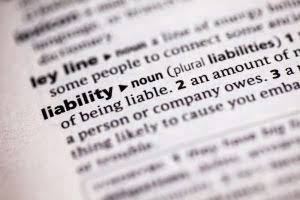 Continue reading
Continue reading
Understanding The Retained Earnings Formula: Calculation, Examples, and Importance
 February 2, 2022
February 2, 2022
Hence, reinvesting more money into the business might decrease shareholder value. The statement of retained earnings can be created as a standalone document or be appended to another financial statement, such as the balance sheet or income statement. The statement can be prepared to cover a specified cycle, either monthly, quarterly or annually.
- The company’s retained earnings account is a crucial component of its balance sheet, representing the cumulative retained profits over time.
- Retained earnings are the profits of a business entity that have not been disbursed to the shareholders.
- The beginning period retained earnings are thus the retained earnings of the previous year.
- An acquisition occurs when the company takes over a same-size or smaller company within its industry.
- Retained Earnings are listed on a balance sheet under the shareholder’s equity section at the end of each accounting period.
While retained earnings help improve the financial health of a company, dividends help attract investors and keep stock prices high. Retained earnings represent the portion of net profit on a company's income statement that is not paid out as dividends. These retained earnings are often reinvested in the company, such as through research and development, equipment replacement, https://www.bookstime.com/accounting-services-for-startups or debt reduction. On one hand, high retained earnings could indicate financial strength since it demonstrates a track record of profitability in previous years. On the other hand, it could be indicative of a company that should consider paying more dividends to its shareholders. This, of course, depends on whether the company has been pursuing profitable growth opportunities.
Step 2: Calculate Net Income or Net Loss
The equity section of the balance sheet provides a detailed overview of the company’s financial standing, including the amount of retained earnings. Retained earnings represent the accumulated profits the company has kept over the years, which can be used for various purposes, such as reinvestment in the business or issuing cash dividends to shareholders. Retained earnings appear on the balance sheet under the shareholders’ equity section. A company would use retained earnings to reinvest its profits into the business for future growth and expansion. Retained earnings refer to the portion of a company’s total earnings that are not distributed as dividends to shareholders but retained and reinvested in the company.
- Send invoices, get paid, track expenses, pay your team, and balance your books with our financial management software.
- In financial modeling, it’s necessary to have a separate schedule for modeling retained earnings.
- On the other hand, when a company generates surplus income, a portion of the long-term shareholders may expect some regular income in the form of dividends as a reward for putting their money in the company.
- The growth of a business and its potential for future investment also play significant roles in determining retained earnings.
On the other hand, when a company generates surplus income, a portion of the long-term shareholders may expect some regular income in the form of dividends as a reward for putting their money in the company. Traders who look for short-term gains may also prefer dividend payments that offer instant statement of retained earnings example gains. Net income is the amount of profit a company has generated during a specific period. Retained earnings, on the other hand, represent the accumulated profit that a company has kept over time. While net income contributes to retained earnings, the two are different concepts in accounting.
Continue readingA Guide to Small Business Accounting for Beginners
 July 26, 2021
July 26, 2021
And our advice can grow with your company, from simple startup CPA accounting to part-time CFOs. Whereas a traditional small business focuses on their bank account balance, startups focus on the KPIs that help them raise their next round of funding. Choose an advisor who “gets” early-stage, Silicon Valley-style businesses. At Kruze, we would argue that a VC-backed startup should have an accountant/CPA (and not just a bookkeeper). Businesses with over six months of runway should consider hiring a real accountant. Merritt Bookkeeping is by far the least expensive online bookkeeping service available on this list.

She has written legal and marketing content and communications for a wide range of law firms for more than 15 years. She has also written extensively on parenting and current events for the website Scary Mommy. From University of Wisconsin–Madison, and she lives in the Chicago area with her family. To get the best possible experience please use the latest version of Chrome, Firefox, Safari, or Microsoft Edge to view this website.
What are the five basic accounts in bookkeeping?
A user-friendly option for small business accounting, FreshBooks makes it easy to track income and expenses and includes a self-employed version just for you. If you’re still on the fence about handling basic bookkeeping or accounting for your business, you're not alone. If the thought of doing your books is overwhelming, you have plenty of other options including enlisting the help of a CPA. You can also hire an experienced bookkeeper or accountant for your business, or just outsource the entire process.
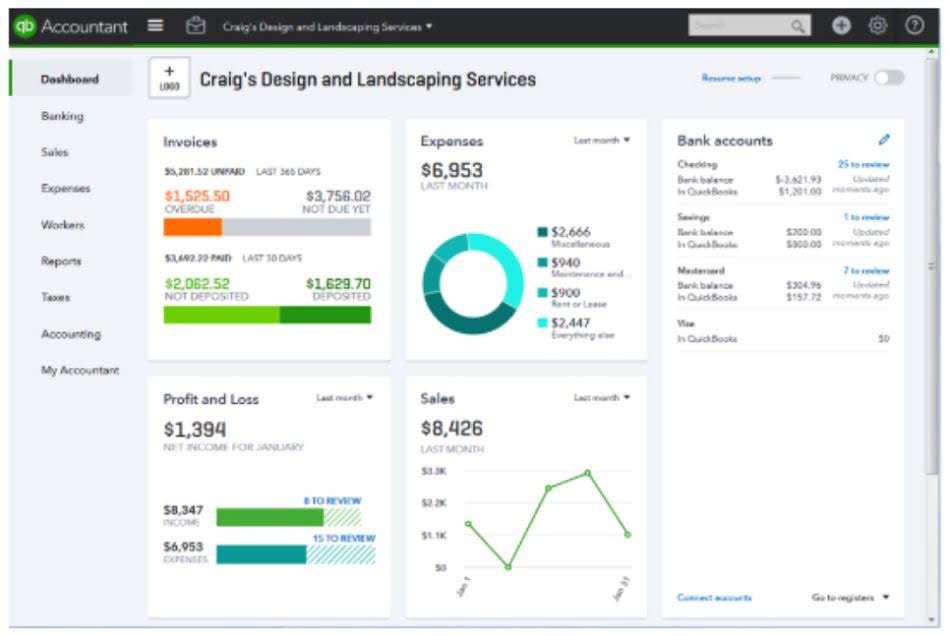
For example, if you sell products, you’ll want an application that offers inventory management, while those that offer services will find time-tracking capability a major plus. There’s good news for business owners who want to simplify doing their books. Business owners who don’t want the burden of data entry can hire an online bookkeeping service. These services are a cost-effective way to tackle the day-to-day bookkeeping so that business owners can focus on what they do best, operating the business. For business owners who don’t mind doing the data entry, accounting software helps to simplify the process.
Financial Records to Maintain
Consider starting your search into business entities for bookkeepers by looking into sole proprietors and LLCs. The latter could be a great option if you might bring in some help down the line. Regardless of the type of business you run, all business owners should write a business plan. Reference your initial business plan — what business startup accounting and bookkeeping services type of clientele are you aiming to serve? In fact, even after you secure funding for your startup, you will need these numbers to report the financial performance of your company to investors. While many startup founders choose to hire an accountant, it is possible to do accounting yourself or by using accounting services.
Continue readingBookkeeping Seattle, WA Online Bookkeepers & Accountants
 July 14, 2021
July 14, 2021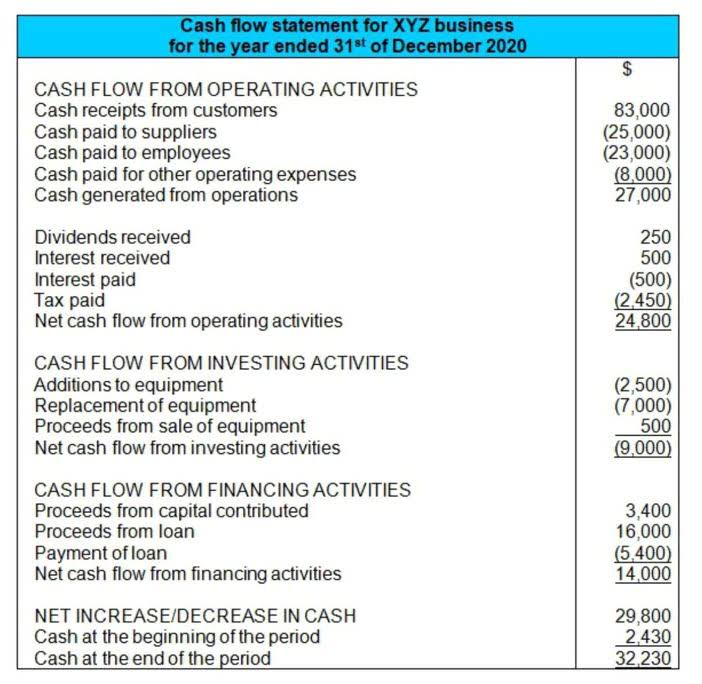
You can feel confident that your books are in good hands. Allow us to remove bookkeeping from your plate so that you can prioritize the more crucial elements of running a business while we manage all complexities concerning Washington State taxation. Linda M. Teachout, CPA, PLLC is a Shoreline business that has been serving individuals and businesses in the Greater Puget Sound area for over five years.

Keep reconciled books
Whether you're interested in working with us, need an expert opinion - or just want to find out more about what we do, we'd love to hear from you. We works well for any business wanting to streamline their back office. We offering customized automation for document management, transaction management, exception resolution, elimination of bookkeeping seattle duplication, and disbursement-related services. Simply payroll, automate computation, adhere to compliance laws, and cut down costs. When you meet with the team, we can assess the scope of the set-up job. We will draft a proposal in a software program called Practice Ignition, and you will sign and send your agreed-upon initial payment.
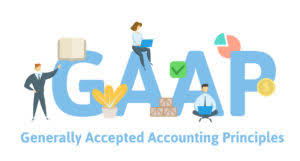
Bookkeeper Services

We also support clients that use other merchant processors. We’ll work with you to connect accounts and pull the data we need to reconcile your books. Shortly after you sign up, we’ll give you a call to learn more about your business and bookkeeping needs. On this call, we’ll connect your accounts to Bench, and gather any extra documentation we need to complete your books. Our platform allows you to automate data inputs from most major providers to avoid common mistakes.
To Growing Small Businesses
Full HR Setups are available to clients at affordable rates. 1-800Accountant Seattle serves those in the metro and across 50 states who require bookkeeping solutions. The team has local certified public accountants with an average of 17 years of experience.
- Therefore, every company is required to maintain proper bookkeeping record.
- Plante Moran enjoys a “Workplace for Your Day” model which, simply put, means we strive for flexibility and balance while staying true to our principally in-person model.
- Our conversations are always fun and I enjoy when we have meetings scheduled.
- I have been extremely satisfied with the services I have received from Sara.
- We have you covered at a fraction of the cost if you were to recruit and hire several people for these roles.
Russ started his tax career in 1998 assisting people who were in trouble with the IRS. From there, he started a mortgage company, then worked for the Washington State Bar Association before starting Sound Bookkeepers. He is a recognized contributor to City of Shoreline, the SBA, and the WA Small Business Development Center as well as authoring a few books on business. Russ has proven he is committed to the success of small businesses in our community. Aenten is the leading online Accounting & Bookkeeping for small businesses in every industry.
The firm's monthly support includes filing scheduled City and State B&O returns, preparing end-of-year 1099s, and integrating third-party payroll platforms. The company has a monthly blog focusing on QuickBooks Online features and trends. Newman Dierst Hales is a Seattle tax and accounting firm that has been serving businesses and individuals for over nine years. Partners Nolan A. Newman, CPA and Ann M. Imus, CPA have over 64 years of combined experience. System Six Bookkeeping, LLC is a Seattle business that provides bookkeeping and accounting services for small businesses.
George Dimov, CPA, offers bookkeeping services to commercial clients in Seattle. Whether for large or small businesses, he and his team aid in recording and preparing financial transactions, including payroll and HR outsourcing, sales tax, accounts payable, and accounts receivable. He also provides https://www.bookstime.com/articles/bookkeeping-for-large-business taxation services for LLC entities, from sole-proprietorship to S-corp, compilation, business valuation, and back-office accounting. With more than 12 years of accounting experience, Dimov and his firm have served retail, biotech, M&A consulting, real estate, and manufacturing industries.
- Knowing therapy tax deductions can reduce expenses and keep your business profitable.
- We strive to provide pathways for success and to purposefully confront and dismantle existing physical, social, and psychological barriers for minoritized students and communities.
- This provides an easy way to monitor cash flow, track expenses and identify discrepancies in bookkeeping records.
- Sign up as a customer today and get a free month of bookkeeping, valued at $299.
- We take pride in providing reliable communication for all of our clients.
- She is always there for you, ready to answer any questions, always professional and very effective.
Compare our Top Bookkeeping Services
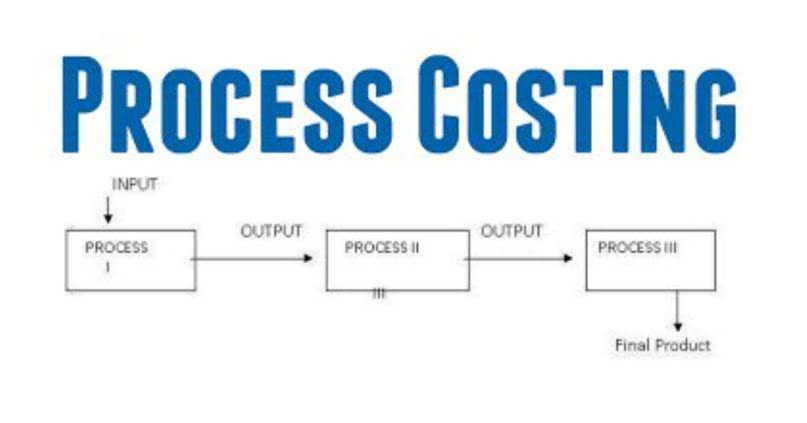 Continue reading
Continue reading
Gross Profit Method vs Retail Inventory Method Chron.com
 July 1, 2021
July 1, 2021This laborious requirement might make use of the average method cost-prohibitive. LCNRV is applied at the end of each accounting period by comparing inventory costs to net realisable value (NRV). AASB 102 Inventories does not allow decreases in one category of inventory to be offset against gains in another.
- If you recently held a Black Friday sale and slashed prices across the board, that will change the percentage too.
- Suppose a retail store wants to estimate the cost of ending inventory using the information shown below.
- However, taking a physical inventory isn't always practical or even possible, so a business needs a reliable way of estimating the value of its inventory.
- It is also useful when inventory was destroyed and you need to estimate the ending inventory balance for the purpose of filing a claim for insurance reimbursement.
While the best way to value inventory is to perform a physical inventory, in certain business operations, taking a physical inventory is impossible or impractical. There are two methods to estimate inventory cost, the retail inventory free cleaning services invoice template method, and the gross profit method. This means the average cost at the time of the sale was $87.50 ([$85 + $87 + $89 + $89] ÷ 4). Because this is a perpetual average, a journal entry must be made at the time of the sale for $87.50.
Gross Profit Method vs. Retail Inventory Method
The effect of inflationary and deflationary cycles on LIFO inventory valuation are the exact opposite of their effects on FIFO inventory valuation. This method is too cumbersome for goods of large quantity, especially if there are not significant feature differences in the various inventory items of each product type. However, for purposes of this demonstration, assume that the company sold one specific identifiable unit, which was purchased in the second lot of products, at a cost of $27.
But if you hold large quantities of inventory, a physical count is inefficient, and using either the retail or gross profit method is highly recommended. The gross profit method is an alternative to the normal periodic method that is available for midyear reporting, with the major advantage of eliminating the need for a physical inventory count. However, you’ll still have to perform a physical count at the end of the year and adjust your mid-year estimates to the actuals determined under the normal periodic method.
How to Calculate the Value of Ending Inventory
Note that this $21 is different than the gross profit of $20 under periodic LIFO. Costs such as utilities, rent, insurance, or supplies are unavoidable during operations and relatively uncontrollable. A company can strategically alter more components of gross profit than it can net profit. Gross profit helps determine how well a company manages its production, labor costs, raw material sourcing, and spoilage due to manufacturing. Net income helps determine whether a company's enterprise-wide operation makes money when factoring in administrative costs, rent, insurance, and taxes. Then, the estimated cost of ending inventory is found by multiplying the retail value of ending inventory by the cost‐to‐retail ratio.
In merchandising companies, inventory is a company asset that includes beginning inventory plus purchases, which include all additions to inventory during the period. Every time the company sells products to customers, they dispose of a portion of the company’s inventory asset. Goods available for sale refers to the total cost of all inventory that the company had on hand at any time during the period, including beginning inventory and all inventory purchases. Suppose that at the end of January 31, 2018, they had 50 oil filters on hand at a cost of $7 per unit. This means that at the beginning of February, they had 50 units in inventory at a total cost of $350 (50 × $7). During the month, they purchased 20 filters at a cost of $7, for a total cost of $140 (20 × $7).
If the current situation yields a different percentage (as may be caused by a special sale at reduced prices), then the gross profit percentage used in the calculation will be incorrect. The last-in, first out method (LIFO) records costs relating to a sale as if the latest purchased item would be sold first. As a result, the earliest acquisitions would be the items that remain in inventory at the end of the period.
The Gross Profit Method Formula Unpacked
Consider, for example, a business with a Gross Profit Margin of 40%, Net Sales of £100,000 and Goods Available for Sale worth £80,000. Finally, your estimated ending inventory would be £20,000 (£80,000 - £60,000), giving a snapshot of your inventory position at the end of the period. Since the gross profit rate is 40% of sales, we derive COGS as 60% of sales. In addition, it is useful to compare the resulting cost of goods sold as a percentage of sales to the recent trend line for the same percentage, to see if the outcome is reasonable. Chartered accountant Michael Brown is the founder and CEO of Double Entry Bookkeeping. He has worked as an accountant and consultant for more than 25 years and has built financial models for all types of industries.
What are the essential steps in calculating inventory using the Gross Profit Method in Business Studies?
In addition to the 25 percent gross profit percentage, you need to know that there are goods available for sale at cost, totaling $155,000, and that sales at selling price equal $125,000. Whip these figures around, and the following figure gives you approximate inventory at cost. One estimation method that’s pretty easy to use is the gross profit method. Putting this in very basic terms with round numbers, if net sales are $100,000 and COGS is $75,000, gross profit is $25,000 and, stated as a percentage of selling price, the gross profit percentage 25 percent ($25,000 / $100,000).
A method that is widely used by merchandising firms to value or estimate ending inventory is the retail method. This method would only work where a category of inventory has a consistent mark-up. The cost-to-retail percentage is multiplied times ending inventory at retail. Ending inventory at retail can be determined by a physical count of goods on hand, at their retail value. After Corner Bookstore makes its third purchase of the year 2022, the average cost per unit will change to $88.125 ([$262.50 + $90] ÷ 4). As you can see, the average cost moved from $87.50 to $88.125—this is why the perpetual average method is sometimes referred to as the moving average method.
Examples of Accounting Problems Dealing With Inventory Cost
Notice that the cost amounts are presented in one column and the retail amounts are listed in a separate column. In this case the cost of goods available of $80,000 is divided by the retail amount of goods available of $100,000. The estimated ending inventory at cost is the estimated ending inventory at retail of $10,000 times the cost ratio of 80% equals $8,000. Alternatively, cost of goods sold may be determined by multiplying net sales by 65% (100% – gross profit margin of 35%). However, the perpetual system requires the use of special software designed to track inventory from purchase requisitions to delivery and ultimately when it is sold to customers.
Continue readingHow to Open a Business Bank Account
 June 16, 2021
June 16, 2021
We hope that helps clarify this mysterious category on the balance sheet. Basically, like Matthew stated, think of it as your "business scorecard". Equity accounts are the financial representation of the ownership of a business. There are a lot of errors that can occur when you are compiling a final statement with an opening balance equity account.
- If you have a balance in this account, you need to work with your accountant to reallocate the balances to their proper accounts in the ledger.
- Here on the blog, Jason shares insights from his experiences in both accounting and tech.
- If the user does not have this information, QuickBooks will create an entry in the Opening Balance Equity account to balance the books.
- You may also need additional business documentation to open an account depending on your type of business and where you bank.
- Unreconciled transactions may also lead to misrepresentation of cash flow and misallocation of funds.
Step 1: Enter an opening balance
When you file taxes for your business, you'll need to have a clear idea of your operations throughout the year. A business bank account is an ideal place for documenting income and expenses. Whether you're a freelancer, small business owner, or full-scale corporation executive, a business bank account is an important stepping stone to becoming a fully-fledged business.
Maintaining your account
- When you file taxes for your business, you'll need to have a clear idea of your operations throughout the year.
- A common cause of a residual balance on your opening balance equity account is incorrect bank reconciliation adjustments, which result in an opening balance.
- Whenever a company gets part of the cash from loans or other financing facilities, then the accountant should increase the liability on the credit side of the journal entry as this reflects the debt.
- This action enhances the overall management of financial records by ensuring that the reconciliation process aligns with the actual financial transactions.
- They also evaluate the company’s internal controls surrounding the recording and adjustment of Opening Balance Equity to determine the risk of material misstatement.
- Inaccurate Opening Balance Equity can lead to discrepancies in financial reporting and can hinder the ability to make informed business decisions.
They offer a comprehensive overview of a company’s financial health, performance, and position, enabling effective analysis and forecasting. The precision of these statements is pivotal in compliance with accounting standards and regulations, fostering transparency and trust. Skipping the reconciliation process when addressing Opening Balance Equity in QuickBooks Online can lead to unaddressed discrepancies, potentially impacting the accuracy and integrity of financial records and adjustments. Conducting a thorough reconciliation of the account is crucial in the process of fixing Opening Balance Equity in QuickBooks Online, ensuring the alignment of financial records and the resolution of any discrepancies. Small businesses can remedy this by reconciling the oepning balance equity account to zero by entering the ending balance, marking bank-cleared items, and ensuring that all items are properly reconciled.
Opening Entry In Accounting
But before we get there, let’s recall what opening balances are, as they, as you can see, relate to the OBE occurrence. However, it might not happen, so you might need to invest some effort into searching for the cause of the discrepancy and fixing it. At this point, I suggest looking at various scenarios where you might end up with a non-zero opening balance equity. At this stage, hopefully, you are prepared to begin comprehending and resolving your opening balance equity in QuickBooks on your own. The Opening Balance Equity account value may be the same as that of the last year’s Retained earnings. Opening Balance Equity in a subsequent year is a serious problem and can easily result in profit and loss being incorrect on the profit and loss statement.
- When you're managing daily operations, you want to be able to conduct your business professionally.
- While there’s nothing to worry about, you can’t ignore it since it’s a temporary account you should close.
- The final step of this journey is to create equity accounts and assign balances to them.
- The Opening Balance Equity account is used to ensure that the company’s retained earnings are accurate and up-to-date.
- Also, you might want to remove the remaining downloaded transactions from your banking page.
- So, upon completing the setup, you might want to allocate this balance to the appropriate accounts, such as inventory assets or equity accounts.
Understanding Opening Balance Equity: A Guide for Financial Professionals
After that, all you have to do is make sure that your accounts remain balanced. The initial investment made by the company’s owners or shareholders is recorded in the opening balance equity account to maintain the balance of the accounting equation. Opening balance equity account is located under the equity section on a balance sheet and is a special account only used by a computer. It is used to offset other accounts for accounting books to be balanced. Accounts Receivable is the amount of money owed to a business by its customers.

Income Statement
Opening Balance Equity is a special QuickBooks account in the equity section of the Balance Sheet. The most common reason for a balance in the Opening Balance Equity account is the result of a bank reconciliation that was not balanced to zero prior to completion. The process of entering the ending balance, marking the items that have cleared the bank, and reconciling the difference to zero is the correct procedure. Also, closing books ensures your financial data stays the way you want it to.
- It’s worth noting that some of them are a normal course of things, but others might require more of your attention.
- It’s the fundamental principle in accounting, and QuickBooks obviously follows it.
- These equity accounts have been labeled differently in order to denote the ownership or form of a business.
- If your customers or vendors have outstanding balances from before your opening balance date, enter the individual unpaid invoices or bills.
- This account is needed when there are prior account balances that are initially being set up in Quickbooks.
- From this point forward, it should no longer be possible to access the opening balance equity account, which means that access to the account should be locked down.
This article will describe opening balance equity, why it exists, and how to close it out so that your balance sheets are presentable to banks, auditors, and potential investors. The purpose of Opening Balance Equity is to ensure that the company’s books are balanced when they are first set up. This is also known as net profits or net earnings of a company, and as a form of equity, it can be reinvested into the company for growth purposes and is used to determine what the business is worth.

Opening Balance Equity serves as a repository for any initial equity that a company has when it first establishes its financial records or transitions to a new accounting system. This account is used to balance the books by offsetting discrepancies between assets and liabilities when historical data is entered. It acts as a temporary holding spot, reflecting the net value of a company’s assets minus its liabilities at the start of a new accounting period. QuickBooks uses this account to maintain the equality of debits and credits when a one-sided entry is entered in the form of a beginning balance in an asset or liability account. It is one of several default accounts in the owner’s equity section of the balance sheet and should always be zero since you need to avoid making one-sided journal entries. Other common owner’s equity accounts in Paid-in Capital and retained earnings.
When you create a new account in QuickBooks Desktop, pick a day to start tracking all of your transactions. You enter the balance of your real-life bank account for the day you pick. Compare the total opening balance equity to the total beginning equity accounts indicated in the previous account balances once the account entry procedure has been finished for all accounts. Whether not, check the original account balances entry to determine whether a data input mistake occurred.
Continue readingHow To Become An Enrolled Agent EA Exam Guide 2024
 April 13, 2021
April 13, 2021
Whether you love or hate multiple-choice questions, the fact that the EA exam consists solely of MCQs has its advantages. For example, managing your time on the EA exam is easier because it limits itself to MCQs and doesn’t also contain case studies or essays. The last step to your MCQ-answering strategy is to read all the answer options. You must read them all so as not to allow any of the distractors to trick you.
- To become an enrolled agent and work as a certified tax expert, you must pass the entire EA exam, which consists of three parts.
- Our technology-powered approach reduces study time by 40%, speeding up your path to become an Enrolled Agent.
- The Part 3 pass rate has not only been more consistent than the others, it’s also been consistently higher.
- Some people speculate that the reason for this drop is a lack of preparation on the part of test-takers, as Part 1 has a reputation for being easier than the other exam parts.
- Candidates living overseas can find international testing locations at Prometric.com/SEE by selecting “Contact Numbers–Including International Contacts”.
The EA exam is available for most of the year, but the exam does include a brief blackout period. So, you can sit for the exam during the testing window of May 1-February 28 of the following year. However, you can’t sit during March and April, as the IRS uses these months to update the test according to the most recent tax laws. For each part of the EA exam, you will have 3.5 hours of total testing time. But the testing process will also involve completing a pre-exam tutorial and a post-exam customer satisfaction survey, so you’ll spend about 4 hours at the Prometric testing center.
What is the TaxMama pass rate for the SEE exam?
As the average Enrolled Agent exam pass rate is 71%, many people find the EA exam to be easier than the CPA Exam or CMA exam. On average, EAs earn about 10% more per return than unenrolled tax preparers. And enrolled agent salaries can range from $42,000 for entry-level positions to ea exam pass rate $60,000 for late-career positions. Thanks to improvements in the industry, you have several different EA review courses to choose from. And finding the best one for you is crucial to your EA exam success. Therefore, you must evaluate your options before you make this big decision.

But there is a rescheduling fee depending on when exactly you reschedule your exam appointment. Surgent’s ReadySCORE™ metric adjust as you study, so you know when you to stop with full confidence. Part 3 is reputed to be the “easy” part, but it’s still important to study.
EA Qualifications
Remember, becoming an Enrolled Agent requires dedication, perseverance, and a commitment to maintaining a high level of tax expertise. Now that you know how past EA candidates have fared after paying their examination fee and applying to become an Enrolled agent, it’s time to learn more about the actual exam. Additionally, if tax preparers studied for the exam in April, they probably couldn’t study very well during the rush to close the busy season.
You must know the content that the Enrolled Agent exam Part 2 covers to pass it. Thankfully, the EA exam syllabus contains all of this content. The IRS doesn’t use a straightforward formula to achieve this conversion from raw to scaled score. So as much as some of you would like to know, I am not able to tell you how exactly this is done. We offer scholarship opportunities for students looking to enroll in one of our EA Exam review courses.
Pass Rate: Enrolled Agent Exam Part 1 Pass Rate
Becoming an Enrolled Agent is a significant achievement for tax professionals seeking to specialize in tax compliance, representation, and personal tax preparation. The EA exam, with its multiple parts and rigorous content, tests candidates’ knowledge of tax law and their ability to apply it effectively. Depending on your level of experience, you can expect to earn an EA designation in as little as three to eight months.
Your familiarity with the topics and your current knowledge ultimately determine how much material you still need to master. That might leave you wondering just how difficult it will be to earn a passing score. Even though both CPAs and EAs work in the accounting sector, there are several differences between the designations. For instance, CPAs primarily focus on providing consultation services and tax return preparation.
Pass a suitability check
If Part 1 is the first encounter many candidates have with the EA exam, the low pass rate is likely the outcome of candidates being insufficiently prepared. These candidates either underestimated the difficulty of the exam or the amount of study time necessary to learn all the material. Prometric, the testing center that administers the exam, advises against reading too deeply into the pass rates because candidate populations differ greatly for each exam part. That doesn’t necessarily make Part 1 the hardest exam, it just means it occupies a difficult position on many peoples’ journeys. Are you in the process of preparing for the Enrolled Agent exam?
- By achieving success on your initial attempt while you meet EA and CIA certification requirements, you can pave the way for a prosperous career.
- Another reason for the low pass rates is that people cannot postpone the exam by rescheduling in February because February is the last month of the testing window.
- Achieving passing scores on all three parts is a prerequisite for becoming an enrolled agent.
- Water is allowed in the testing room but it must be in a clear or transparent container with a lid or cap.
- Lacking this vital knowledge can make it more difficult to pass.
- On the day of the exam, ensure that you arrive at the test center well-prepared.
Bookkeeper360: Xero Accounting & Bookkeeping Solution
 February 24, 2021
February 24, 2021
Since there are no certifications required to be a bookkeeper (unlike accountants or CPAs), you’ll want to do your homework on them and definitely check references/reviews. More than likely, when you’re first looking for some outside help, you can’t justify bringing on a full-time staff person just for bookkeeping (unless your business is rapidly bringing in a lot of revenue). So the natural first step is to contract with someone on a part-time or as-needed basis.
It lets you know how you’re doing with cash flow and how your business is doing overall. Staying on top of your bookkeeping is important so that you don’t have unexpected realizations about account balances and expenses. We’ve put together this guide to help you understand the basics of small business bookkeeping. This remote bookkeeping service offers tailored bookkeeping plans to suit the requirements of your business.
Best Practice Processes
Most accounting software allows you to automatically run common financial statements such as an income and expense statement, balance sheet and cash flow statement. Business owners or accountants can then use these statements to gain insight into the business’s financial health. Is budget your top concern when it comes to bookkeeping near me online bookkeeping services? With a flat fee of $190 per month, Merritt is one of the most affordable, straight-forward priced solutions out there. Bench offers full-service bookkeeping services for small business—with all of their plans including both a dedicated bookkeeping team and an easy-to-use software system.
- If you only have a handful of clients, a basic bookkeeping service may provide all the assistance you need to keep your books in order.
- While Bookkeeper360 is our best recommendation for Xero users, it also works well for QuickBooks Online users dissatisfied with the limited services of QuickBooks Live.
- Merritt Bookkeeping is a no-frills Quickbooks virtual bookkeeping services firm that offers fixed, flexible pricing and an easy user interface to small business owners.
- Moreover, just like Bookkeeper360, Bookkeeper.com offers additional services for payroll, tax planning and management, as well as general financial planning.
- You’ll have access to bookkeepers, tax and financial advisors, payroll specialists, and a dedicated accountant who is an expert in your state and industry.
- On the other hand, you might be able to find a bookkeeping service that simply works with you virtually, utilizing the system or platform you already have in place.
- Freelancers and startups often working remotely will appreciate the iOS mobile app that provides financial reporting functionality and real-time cash flow updates.
Their team members provide expert guidance and professional consultancy in compliance with the Taxation Law & Legislation. At the end of the day, only you can determine which of these services, if any, will meet your bookkeeping needs. All in all, when you sign up for QuickBooks Live, you’ll have access to a certified bookkeeper, as well as a bookkeeping team that can address additional questions. Your bookkeeping team will maintain your books throughout the month and review and close them when the month ends.
Products
Visit Bookkeeper360’s Back-Office Technology page for more information about these services. For example, most software companies accept electronic submissions and then hold them until the IRS is ready to begin processing later this month. IRS Free File will also be available on IRS.gov starting Jan. 12 in advance of the filing season opening.
- Answer a few simple questions to receive a customized suggestion for the best online bookkeeping service for your business.
- Our partners cannot pay us to guarantee favorable reviews of their products or services.
- From bookkeeping to payroll, to tax and CFO advisory, we provide a complete set of financial solutions for your business.
- And while there are definite advantages to working with a large established company, you should proceed with caution.
- Not all bookkeepers offer tax preparation and/or filing services, so 1-800Accountant stands out with its additional tax services.
- With transparent pricing that’s based on your monthly expenses and available catch-up bookkeeping, it is an excellent option for businesses looking for an all-in-one accounting solution.
Global FPO uses modern accounting software like QuickBooks to offer cost-effective bookkeeping services to its clients. When you have a Small Business Plus plan or higher, you get unlimited online support. All plans come with onboarding, a dedicated bookkeeper and account manager, reconciliation at month-end, balance sheet, P&L, statement of cash flows and a portal with document storage. Higher-tiered plans unlock more transactions and a more frequent service level. However, most scores are high and Bookkeeper360’s team of accounting professionals was praised for its knowledge and quick responses.
QuickBooks Live: Best for QuickBooks users
For example, you may have estimated certain invoices that are later solidified with an actual number. Once the entries are assigned to the correct accounts, you can post them to the general ledger to get a bird’s-eye view of your current cash status. Most accounting software does this for you, so you don’t need to worry about an extra step.
Continue readingBrush Up on Bonds: Interest Rate Hikes and Duration
 June 3, 2020
June 3, 2020In this instance, the holder of a bond would benefit from holding the longest maturities because the longer the maturity, the higher the gain. That is the reason that bond investors anticipating a decline in interest rates position themselves at the long end of the maturity spectrum, in order to realize the largest capital gains. Conversely, rising rates can lead to loss of principal, hurting the value of bonds and bond funds. Investors can find various ways to protect against rising rates in their bond portfolios, such as hedging their investment by also investing in an inverse bond fund.
- Mortgage-backed securities (MBS) may be more sensitive to interest rate changes than other fixed income investments.
- Callable bonds can be redeemed before the date of maturity at the issuer's discretion.
- Treasury bonds are also the only bonds you can buy without going through a broker.
- Let's look at the different types of bonds, starting with the types of bonds that could make up the core of your bond portfolio.
Bond terms to maturity can range from as little as one year to more than 10 years. Intermediate-term bonds mature in four to 10 years and long-term bonds won't reach maturity until more than 10 years have passed. Bonds are bought and sold on secondary markets after they're initially issued by the company. Bonds with higher yields and lower prices usually have lower prices for a reason. These bonds are priced with higher yields to reflect their higher risks.
Suppose you want to sell your bond one year later, but the market interest rate has increased to 4%. Because buyers can now purchase a $1,000 bond with $20 six-month coupon payments, your $15 coupon payment doesn’t look so great. Conversely, bond prices increase after a drop in interest rates.
Historical 10-year Treasury bond yields 1962–2022
Zero-coupon bonds tend to be more volatile, as they do not pay any periodic interest during the life of the bond. Upon maturity, a zero-coupon bondholder receives the face value of the bond. Thus, the value of these debt securities increases the closer they get to expiring. At first glance, the negative correlation between interest rates and bond prices seems somewhat illogical; however, upon closer examination, it actually begins to make good sense.
Additionally, just as longer-term bonds fell when interest rates went up, the prices of long-term bonds will rise when interest rates go down. That is because investors looking to reinvest the proceeds from their maturing CDs are willing to pay extra for long-term higher rates, which are no longer available in the marketplace. However, in today’s interest rate environment, investors are earning more on short-term bonds than long-term bonds, as you can see in the chart below. And investors are earning even more on federally insured certificates of deposit (CDs).
- For example, if a bond has a duration of 10 and interest rates increase by 1 percentage point, then that bond's price would be expected to decline by approximately 10 percent.
- Zero-coupon bonds have unique tax implications, too, that investors should understand before investing in them.
- A move in the direction of overall interest rates, such as what happened in 2022, will affect bond prices.
- Interest rates, bond yields (prices), and inflation expectations correlate with one another.
When inflation is a concern, the Fed may consider raising interest rates. Higher interest rates make the existing lower interest rates less desirable. In addition, the discount rate used to calculate the bond's price increases. Bond prices and bond yields are excellent indicators of the economy as a whole, and of inflation in particular. As bond prices shift, you can reverse engineer market expectations about interest rates and future market expectations. As discussed, the price of publicly traded bonds fluctuates for a few reasons, and the rationale for their price movements tends to be more obvious than the reasons that stocks move.
Another concept involves how soon you get your investment back (liquidity). All else equal, you would want to make shorter-term loans where you would get your principal back sooner rather than later. The only free wave accounting alternative way that you would be willing to lend your money for longer is if you received more interest to do so. In the bond investing area, significant changes in the interest rate environment are not hypothetical.
Treasury Inflation-Protected Securities (TIPS)
That is, if a bond was purchased at issuance, it would often be purchased in fixed, "clean" increments like $100 and would receive only coupon rate payments. The calculation of bond prices due to the change in time to maturity can also be easily figured based on some relatively simple math, giving investors a clear idea of a bond’s expected price. The effect of interest rates on bond prices is more pronounced in longer-maturity bonds than in shorter-term ones.
Bond Prices vs. Yield
If the bonds trade publicly, the price may fluctuate over the bond’s lifetime. On the other hand, savings bonds such as the Series I bond do not trade publicly, so their price does not change. The investment information provided in this table is for informational and general educational purposes only and should not be construed as investment or financial advice.
What to do when your savings bond matures
Insider receives compensation when a reader provides certain personal information to Vanguard after clicking a Digital Advisor enrollment link on this page. Vanguard's proprietary models suggest Treasurys are close to fair value based on current fundamentals, which wasn't the case two years ago. Markets increasingly believe the central bank is done with its historic rate-hiking cycle, and that rate cuts are imminent. Vanguard, for its part, expects policy easing to begin in the second half of the year.
Let's assume an investor bought a bond with a 10-year maturity, a coupon rate paying 2%, and purchased it at its par value of $1,000. When rates go up, bond prices typically go down, and when interest rates decline, bond prices typically rise. This is a fundamental principle of bond investing, which leaves investors exposed to interest rate risk—the risk that an investment's value will fluctuate due to changes in interest rates. Instead of settling for 2%, investors realize they can instead try to buy the 5% bond in secondary markets. Instead of being able to buy the bonds at par value, the bond's price has become more expensive. You'll still get your 5% coupon rate; however, you'll have overpaid for the bonds and your true yield will be closer to 2%.
Then there’s SEC yield …
Generally, the higher the duration, the more sensitive your bond investment will be to changes in interest rates. The term duration measures a bond’s sensitivity or volatility to market interest rate changes. It takes into account the coupon payments and the date the bond matures. A bond’s duration is expressed in terms of years and helps you compare different bonds or bond funds. The longer the duration of a bond, the more sensitive it is to interest-rate changes. Bond valuation looks at discounted cash flows at their net present value if held to maturity.
Continue reading

